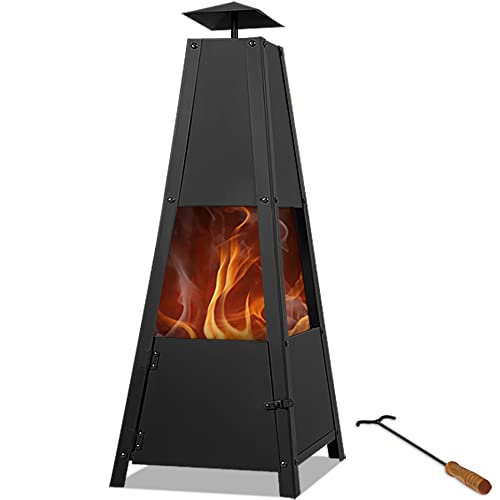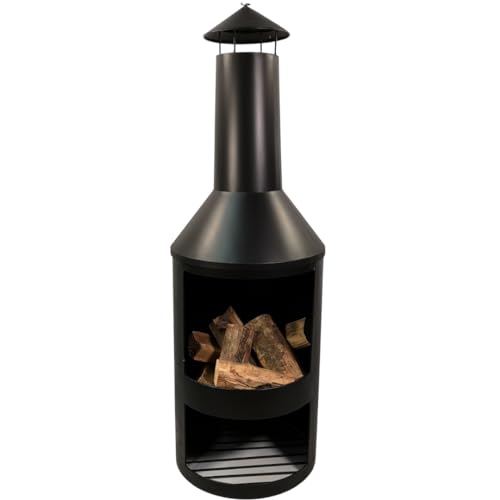Why Everyone Is Talking About Propane Chiminea Right Now
페이지 정보

본문
 A Propane Chiminea Will Keep Your Patio Cozy For Hours
A Propane Chiminea Will Keep Your Patio Cozy For Hours This propane Chiminea will keep your patio warm for alfresco dining, sunset cocktail hours, and evening dinners under the stars. Choose the one that best caters to your needs and space while focusing on safety and maintenance requirements.
This propane Chiminea will keep your patio warm for alfresco dining, sunset cocktail hours, and evening dinners under the stars. Choose the one that best caters to your needs and space while focusing on safety and maintenance requirements.Chimineas, also known as cheemi-NEH Yah, are a freestanding fireplace with an elongated chimney that is vertical and an enormous body. They are a fantastic addition to outdoor living spaces. Similar to other patio heaters that burn wood, they offer a cosy ambience that is easy to manage.
Safety
A Chiminea is a fireplace for outdoor use that is designed to keep a fire burning for a long time. It is made from clay or metal chiminea and appears like vase. The chimney is the one that directs the smoke. It's a great option for a garden chiminea that needs to be heated, as well as for cooking. Certain models come with grills on top that can be used to cook meals on the fire. A chiminea with grill should be placed on a safe surface, such as brick, concrete, or stone patios. It must be kept at least 30 feet from any combustible structures, including houses. structures.
Chimineas offer a greater level of safety than fire pits because the flames and smoke are contained within the structure. This means they are less susceptible to injuries and accidents. The size of a fire can be controlled more easily in a chiminea, since air is drawn into the bowl from the front and directed upwards. This natural draft keeps the fire burning without any effort on your part.
Chiminesas can be used to create an atmosphere in your outdoor living space by producing radiant heat that gives off an authentic campfire vibe. It also provides a warm environment for family and friends to enjoy the cool night air. You can even add logs to the flames to create an atmospheric crackle and pop.
Chimines can be more difficult to maintain and set up than a fire pit. Sand must be placed at the bottom of the chiminea unlike a firepit, prior to lighting the fire. This will prevent the clay from cracking as it heats. You should also place it on a fire-proof surface and keep it at least 10 to 20 feet away from trees, walls, fences and other combustible structures.
Both chimineas and fire pits can be used to provide heating for your home, but it's important to choose the best one for your needs. Make an informed choice by evaluating the aesthetics, maintenance and the efficiency of each model. Think about your lifestyle, such as whether you'll use the heater to entertain guests or just for quiet family gatherings.
Fuel
The propane chiminea can be used to cook and heat. The majority of chimineas are made from clay, however cast iron and steel are also available. Some models combine the two types of materials, giving you a traditional-looking chiminea, but with the added benefit of gas-powered heat.
The fuel you choose to use in your chiminea can affect the length of time that your fire will last and how hot it gets and other factors. You'll need to think about the short and long-term fuel expenses, as well as maintenance and installation costs.
Propane has many advantages over wood or ethanol. It is odorless and provides a lot of heat at a low cost. It's a familiar substance used in cookware and heaters and therefore isn't difficult to locate. It's not necessary to spend much time maintaining a propane fire because it is usually started by turning the switch.
However, there are some negatives with using a propane-based chiminea. It's not as green as wood or ethanol. It's a fossil fuel that is the result of natural gas processing and petroleum refining. It's harmful to the environment and may cost more than wood or ethanol.
You should also consider the smoke that is produced by your chiminea as well any local regulations that may apply to outdoor burning. Kiln-dried heat logs or firewood are an excellent choice for chimineas because they produce very small amounts of smoke. These are also safe to use in Smoke Control Areas.
Ultimately, your choice of a chiminea or fire pit will boil down to your personal preferences and lifestyle requirements. Both options can be a focal point in an outdoor space. However, you'll want to consider safety features and maintenance requirements prior to making a decision. It is also important to think about how often you'll be using your outdoor firepit or chiminea, so that you can choose the appropriate fuel type. With careful consideration, you can make a wise purchase and take pleasure in the warm glow of your new chiminea for years to come.
Ventilation
A chiminea is a great alternative if you love outdoor fires. They are stylish and provide plenty of heat. Their natural flames keep the fire burning without needing to be constantly tended. You'll have more time to spend with your family and friends instead of worrying about the fire.
Chimineas come with a bowl that has an assortment of sticks that creates natural draft. The air flows through the bowl's front and then moves upwards through the stack, and is released at the top. This design reduces the amount of smoke and ash that is produced and allows you to sit nearer to the flame. You can use a chiminea indoors but you should keep it away from things flammable as sparks are always flying around.
There are many ways to reduce the amount of smoke produced by your chiminea. Use Duraflame logs in ceramic chimineas, which do not produce a lot of smoke. Another option is to place your chiminea within an area which is shielded from wind. These two tips will allow you to enjoy your chiminea without worries about disturbing your neighbors or damaging your patio furniture.
Both clay chimineas and models made of cast iron or steel are long-lasting However, you must be sure to protect them from the elements. The best way to accomplish this is to apply an acrylic or sealer to the exterior of your largest chiminea prior to when you begin using it. This will help protect it from cracking and fade because of exposure to sunlight. Reapply the coating after 6-8 weeks of use.
If you're ready to light the fire, make sure to put your chiminea tall in the stand it came with. Never put it on a flame-prone surface, like decks, and make sure to clean the area around it of any combustible or flammable materials before lighting a fire.
If you are a frequent fire starter it is crucial to spruce up your Chiminea prior to when you begin using it regularly. The first few small fires you make should consist of a few pieces of dry wood, seasoned wood and the kindling. These initial small controlled burns can aid in sealing the clay and lessen hair-line cracks that can cause problems.
Maintenance
Like all furniture outdoors, it's important to keep your chiminea in good condition. If you take care to clean it frequently and ensuring it's secure from the elements (a waterproof cover is essential) then it will last longer and work at its highest performance.
Chimineas may crack if they are not properly maintained. Alongside the obvious not to drop it or beat it with a hammer, improper techniques for burning and not paying attention to maintenance can also lead to a cracked clay Chiminea.
A good chiminea's guide is crucial. It should be included with your chiminea. It should explain how often you need to clean it, as well as any specific techniques to maintain the clay. Most people follow the 'bicarbonate of soda paste' cleaning method described above, doing this about 2-3 times a year, or more frequently during the summer months when you're using it most. After cleaning your chiminea, it's worth giving it a quick rinse with clean water before reintroducing the sand or gravel to the bottom of the base (once it's dry of course).
If you're concerned about cracking then it might be worthwhile to consider purchasing a cast iron chiminea since this is considerably harder-wearing than clay versions. Cast iron chimineas can rust which is why it's essential to keep them dry and away from burning combustibles.
It's also a good idea in addition to cleaning your chiminea to invest in a cover and a grate that is weatherproof, such as this one from Amazon that will shield it when you're not using it. A grate can be beneficial if your chiminea is in a large open-plan living space, with soft furniture near it. It will stop hot ash flying all over the place.
Chiminesas can dramatically reduce the amount of smoke in your outdoor space as it has a chimney enclosed which directs the smoke upwards away from the person who is smoking or sitting by the fire. However, it's recommended to only use wood that is seasoned to limit the amount of sparks as this could cause an abundance of smoke.
- 이전글Why Big Chiminea Is Fast Becoming The Trendiest Thing Of 2024 24.11.22
- 다음글This Week's Top Stories About Largest Chiminea 24.11.22
댓글목록
등록된 댓글이 없습니다.


